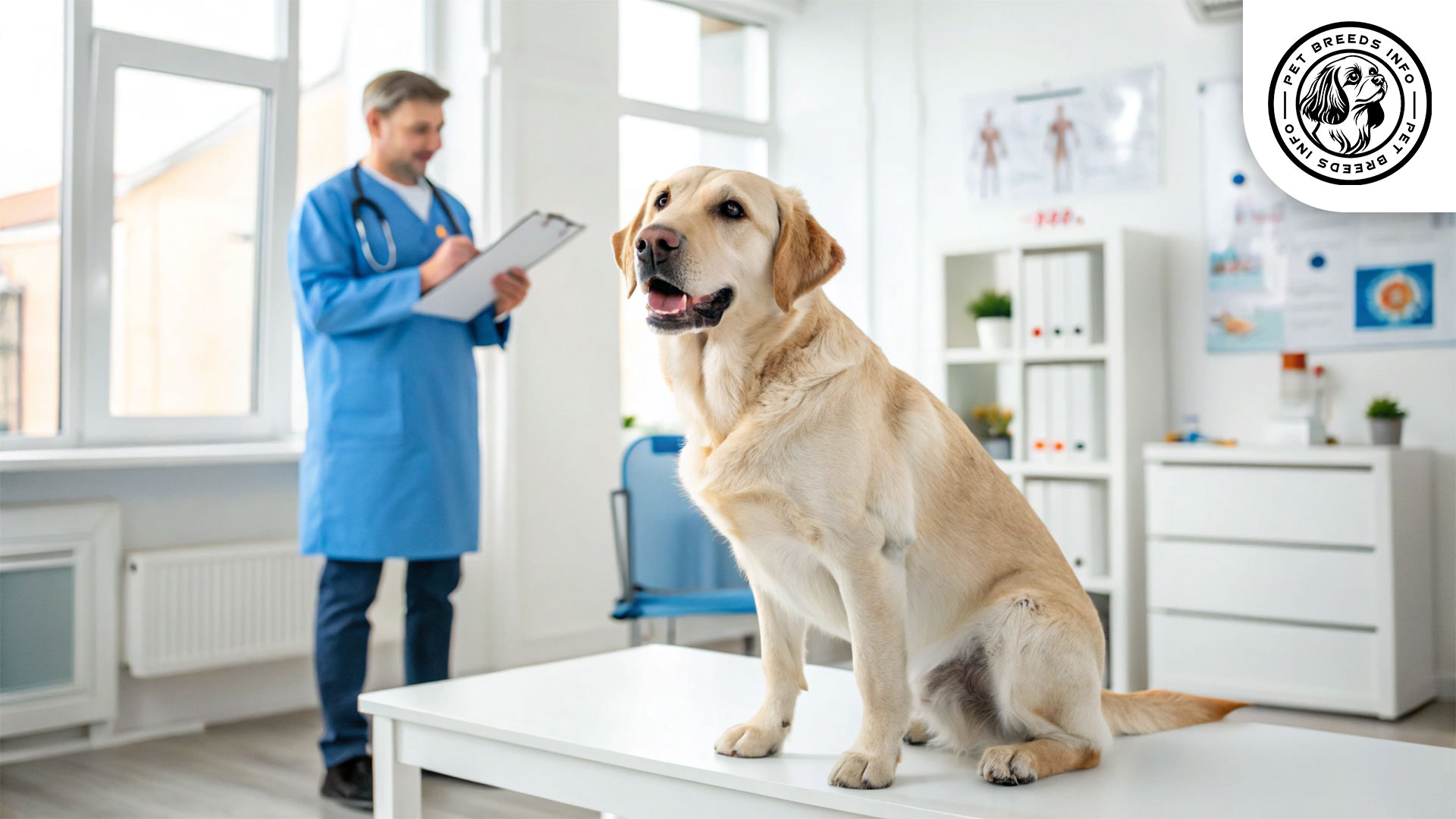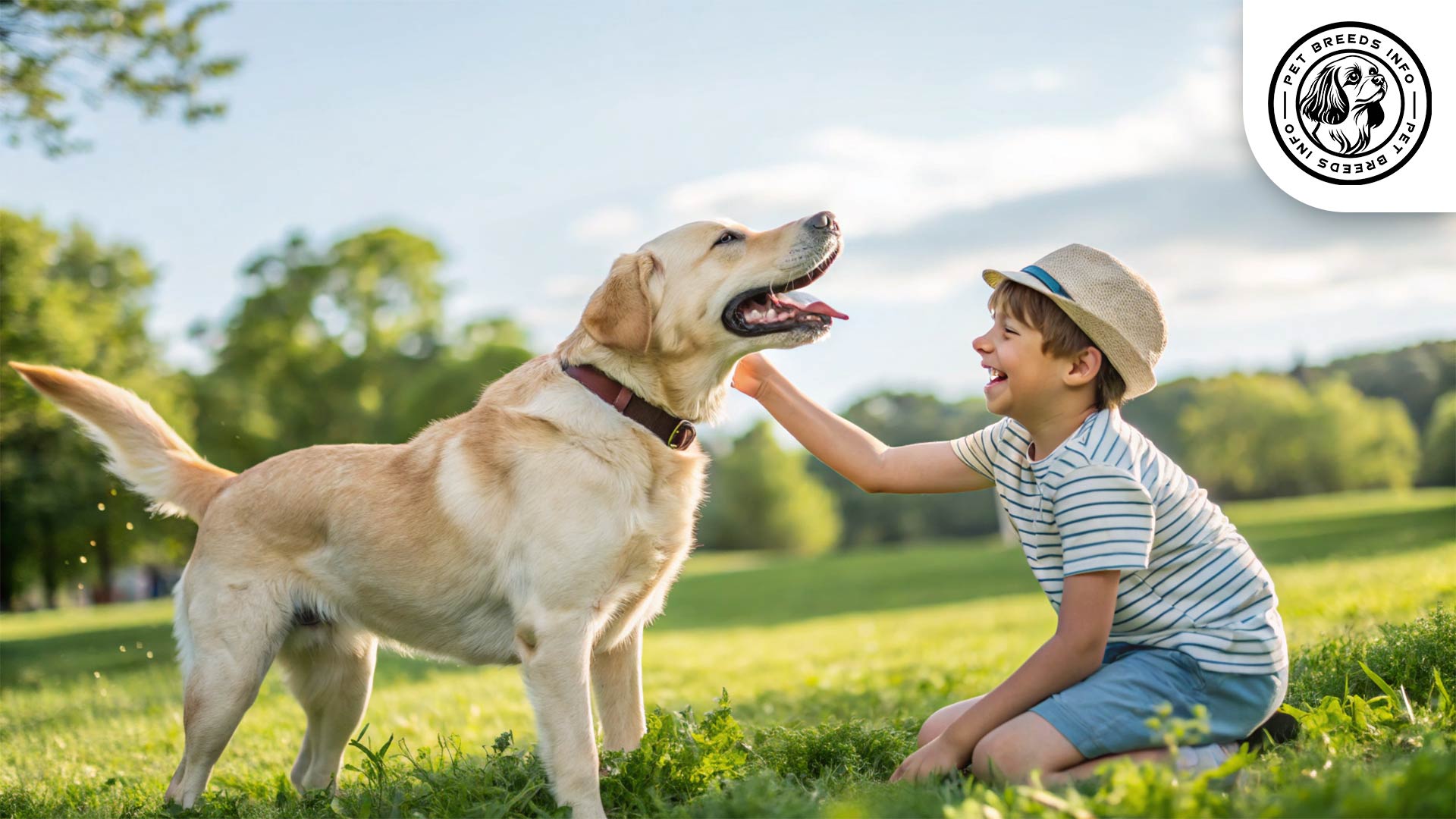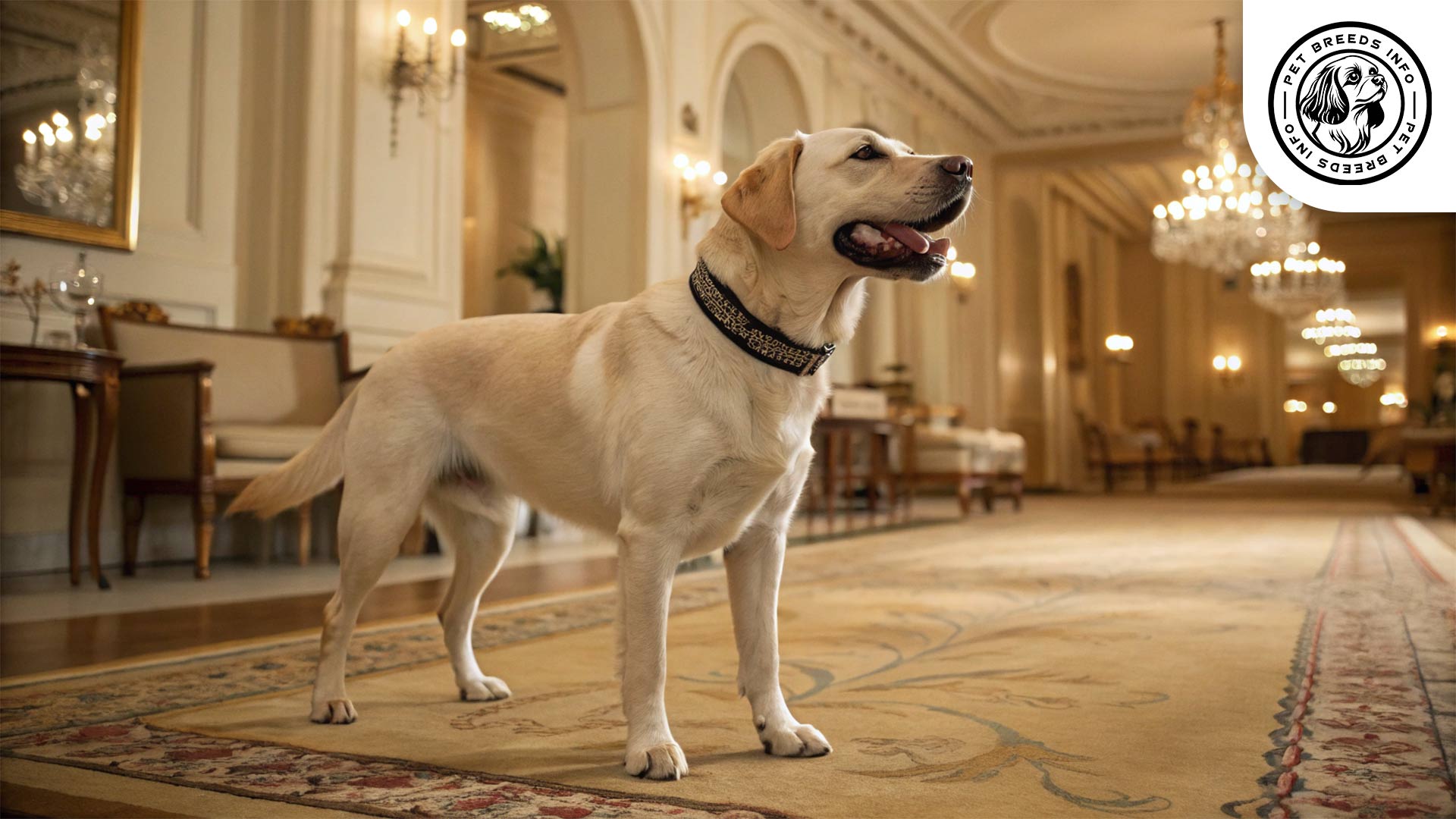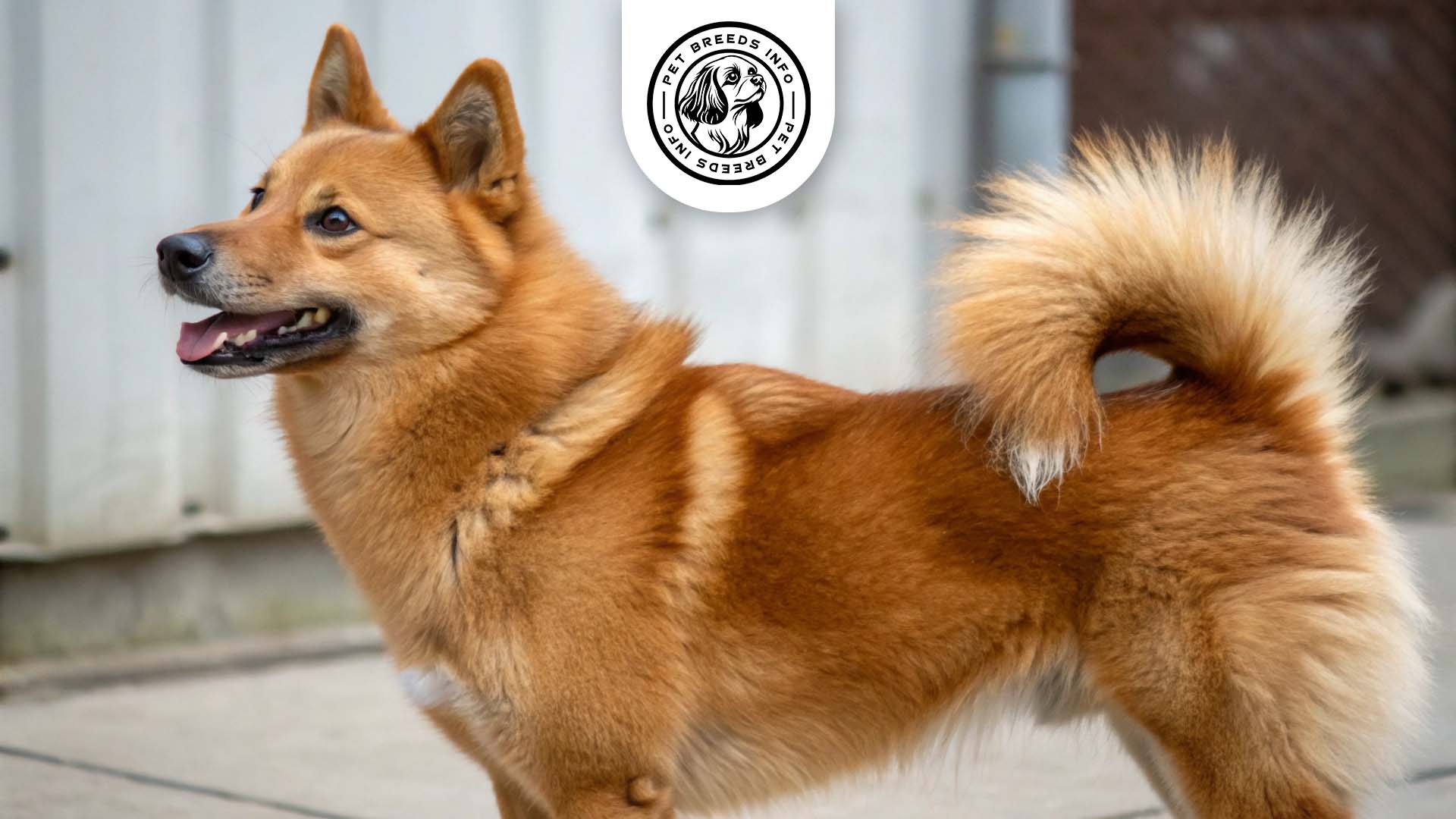Labrador Retriever Dog Breed: Size, Price & Personality
General Introduction of the Breed
The Labrador Retriever, also known as “Labrador” or simply “Lab,” originates from Newfoundland, Canada. This breed was initially developed in the early 19th century to assist fishermen by retrieving fish and pulling in nets. Over time, it gained popularity as a hunting and companion dog due to its intelligence, obedience, and friendly nature.
Table of Contents
| Weight | Males: 65-80 lbs (29-36 kg) Females: 55-70 lbs (25-32 kg) |
| Lifespan | 10-12 years |
| Diet | High-quality diet (kibble, wet, or raw). Controlled portions, typically two meals a day. Avoid harmful human foods. |
| Care | Daily exercise (walks, running, swimming). Weekly brushing. Moderate shedding. Regular bathing, nail trimming, ear cleaning, dental care. |
| Health | Common issues: Hip & elbow dysplasia, progressive retinal atrophy, obesity, ear infections. Regular vet check-ups and preventive care are key. |
| Color | Yellow, Black, Chocolate |
| Nature | Highly intelligent, eager to learn, high energy, affectionate, friendly, social, good with children and other pets, natural retrieving instinct. |
| Price | $800 to $2,500 from reputable breeders. Lower cost for adoption from rescue organizations. |
Physical Characteristics
Labrador Retrievers are medium-to-large-sized dogs. Males typically weigh between 65-80 lbs (29-36 kg) and stand around 22.5-24.5 inches (57-62 cm) tall. Females weigh approximately 55-70 lbs (25-32 kg) and reach heights of 21.5-23.5 inches (54-60 cm).

The breed has a short, dense, water-resistant double coat, available in three standard colors: yellow, black, and chocolate.
Labradors have medium-sized, expressive brown or hazel eyes. Their ears are set slightly above eye level and hang close to the head. They have a thick, “otter” tail, which aids in swimming.
Read More: Jack Russell Terrier Dog
Personality and Temperament
Labradors are highly intelligent and eager to learn, making them easy to train. They have a high energy level and require regular physical and mental stimulation.
They are extremely affectionate and form strong bonds with their owners. Their friendly and social nature makes them great with children, families, and other pets.
Labradors have a natural retrieving instinct and enjoy games such as fetch. They are highly adaptable but may be sensitive to sudden environmental changes.
Care and Maintenance Requirements
This breed requires daily exercise, including walks, running, or swimming. A large yard is ideal, but labs can adapt to apartment living with adequate exercise.
Grooming is relatively simple, requiring weekly brushing to manage shedding. They shed moderately year-round and more heavily during seasonal changes.
Labradors tolerate cold weather well but may struggle in extreme heat. Regular hygiene practices such as bathing, nail trimming, ear cleaning, and dental care are essential.
Diet and Nutrition
Labradors thrive on a high-quality diet, which can include dry kibble, wet food, or a natural/raw diet. A balanced diet with controlled portions is vital to prevent obesity.
Avoid feeding human foods like chocolate, grapes, onions, and excessive processed treats. Portion sizes should be carefully managed, typically feeding two meals per day.
Read More: Kerry Blue Terrier Dog
Health and Common Medical Issues
Common health concerns for Labradors include hip and elbow dysplasia, progressive retinal atrophy, obesity, and ear infections. Regular veterinary check-ups help in early detection.
The breed has an average lifespan of 10-12 years. Routine vaccinations and preventive care, including flea and tick prevention, are essential.

Training and Behavior Management
Labradors are highly trainable due to their intelligence and willingness to please. Early socialization and obedience training are recommended.
Positive reinforcement techniques such as treats and praise work best. Consistency in training helps in curbing unwanted behaviors like jumping or excessive chewing.
Interaction with Other Animals and Humans
Labradors are excellent family dogs and do well with children due to their gentle and patient nature. They generally get along well with other pets.
They thrive in a family setting but also make great companions for individuals. This breed prefers companionship and may experience separation anxiety if left alone for long periods.

Price and Availability
The cost of a Labrador Retriever varies based on lineage, breeder reputation, and location. Prices range from $800 to $2,500 from reputable breeders.
Adoption is a great option, with rescue organizations offering Labradors at a lower cost. Always adopt from ethical sources and ensure proper health screenings.

Conclusion and Final Thoughts
The Labrador Retriever is an ideal breed for families, active individuals, and those looking for a loyal companion. They require regular exercise, mental stimulation, and companionship.
Potential owners should consider their space, time commitment, and ability to provide proper training, care, and attention before choosing this breed.
With proper love, training, and care, Labradors make wonderful lifelong companions.
Read More: Karelian Bear Dog
FAQ
How much exercise does a Labrador Retriever need?
Labrador Retrievers have a high energy level and require daily exercise, including walks, running, or swimming. A large yard is ideal, but they can adapt to apartment living with adequate exercise.
Are Labrador Retrievers good with children?
Yes, Labrador Retrievers are generally excellent family dogs and do well with children due to their gentle and patient nature.
What are the common health problems for Labrador Retrievers?
Common health concerns for Labradors include hip and elbow dysplasia, progressive retinal atrophy, obesity, and ear infections. Regular veterinary check-ups are important for early detection.
How much does a Labrador Retriever puppy cost?
The cost of a Labrador Retriever puppy from a reputable breeder typically ranges from $800 to $2,500, depending on factors like lineage and location. Adoption from rescue organizations is also a great and often less expensive option.





